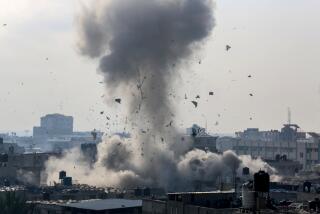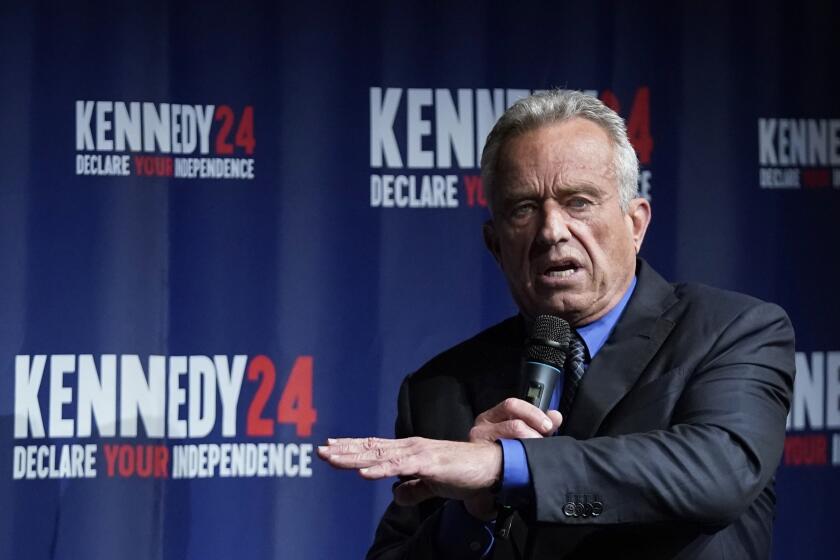Tough Security Issues Remain, but Optimism Marks Last Days of Stockholm Talks
When Western military observers travel to Eastern Europe to watch Warsaw Pact field maneuvers, will they be allowed to use their own binoculars, or will they have to use binoculars supplied by the forces they will be observing?
If aerial inspections are being made of unusual military activities, who will supply the aircraft--the country being inspected, the one doing the inspection, or a neutral nation such as Sweden, Austria or Switzerland? And how many of these “quickie inspections” will be allowed each year?
How many troops have to be involved in planned military maneuvers before foreign observers would automatically be invited--at least 18,000, the figure the Soviets are proposing, or only 6,000, as the North Atlantic Treaty Organization has suggested?
These are some of the nitty-gritty questions still to be resolved here with only two weeks to go before the scheduled end of the 35-nation European Conference on Security and Confidence-Building Measures, which has been going on in the Swedish capital for more than 2 1/2 years.
Nevertheless, there is a mood of optimism, and agreement does seems to be only days away, as the delegates brace themselves for a homestretch of long days and late nights around the committee tables.
Shultz-Shevardnadze Meeting
The conference must be over by Sept. 19, the day that Soviet Foreign Minister Eduard A. Shevardnadze and Secretary of State George P. Shultz are due to meet in Washington for a discussion of prospects for a second summit between President Reagan and Soviet leader Mikhail S. Gorbachev. Success or failure in Stockholm by that date will certainly influence the atmosphere of those Washington talks.
“All the signs are that the Soviet Union genuinely wants a success here in Stockholm, probably for a variety of reasons,” a high-ranking American delegate said. “All of the 35 states taking part in this negotiation will be going on almost immediately to begin work in Vienna on the big conference to review the Helsinki agreements.”
(At Helsinki in 1975, 33 European nations, and the United States and Canada, agreed to the territorial status quo in Europe and pledged to promote peace and the free movement of individuals, commerce, information and ideas.)
“The main Soviet objective in Vienna will be to get agreement on some kind of a European disarmament conference,” the delegate continued, “but they know they won’t get that unless they agree here in Stockholm first on confidence-building measures.”
The atmosphere now is very different from January of 1984, when Shultz and all the other foreign ministers of the nations that signed the Helsinki agreements flew here to open the conference and listen to a blistering Cold War attack on the United States and the West from then Soviet Foreign Minister Andrei A. Gromyko, who now holds the largely symbolic post of president of the Soviet Union.
Decisive Turn in Talks
Signs of a decisive turn toward agreement began to emerge here in June, then picked up when delegates returned from a summer break to resume work on Aug. 19. The real breakthrough came at the end of August when the Soviets took the unusual step of sending the chief of their general staff, Marshal Sergei P. Akhromeyev, to address the conference and announce readiness to accept on-site inspection of Soviet territory.
Akhromeyev appeared in civilian dress when he spoke to the conference, in his capacity as first deputy minister of defense, but then put on his uniform to answer written questions later at a news conference. Never has a chief of the Soviet general staff visited a Western country before, let alone held a news conference there.
There is a great deal of hard bargaining still to nail down the details of on-site inspection, as well as observation of military maneuvers which are in a different category. But the shape of an agreement is now in place, and it does look as if no single issue would of itself be enough to wreck the outcome, although a combination of issues might, according to both NATO and neutral delegates.
Akhromeyev told the conference that the Soviets were prepared to permit only two on-site inspections of its territory each year and stipulated that these would have to be carried out in Soviet aircraft--and could not take place over “restricted military areas.”
As a compromise, the NATO powers have proposed that such inspections be done in aircraft supplied by a neutral power, carrying navigators both from the Soviet air force and the “inspecting power.” The West is also asking for five such inspections a year in each country in Europe. The United States and Canada are outside this “confidence-building zone,” although of course their forces in Europe would be subject to such inspections
Notification of Exercises
As for regular military maneuvers, the new agreement will now make it mandatory for all the signatory powers to provide each other with a full list every November of all the training exercises above a certain manpower level that it plans for the coming year, and admit observers from any signatory state to watch the maneuver in progress.
In the 1975 Helsinki agreements, such notification was to be voluntary and observers went by invitation only. The level of participation was fixed at 25,000 troops. The new agreements will be a marked improvement on this. It will also be the first East-West agreement in arms control to be reached since the second strategic arms limitation agreement was reached in 1979.
More to Read
Start your day right
Sign up for Essential California for news, features and recommendations from the L.A. Times and beyond in your inbox six days a week.
You may occasionally receive promotional content from the Los Angeles Times.






